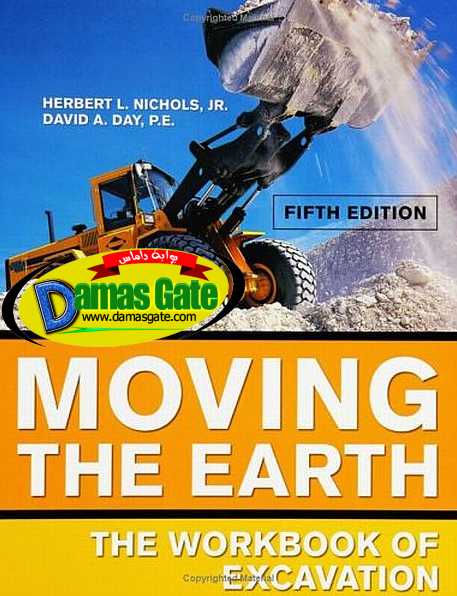Moving The Earth The Workbook of Excavation - 5th Edition

MACHINES AND WORKERS
Clearing of vegetation is usually necessary and almost always desirable as a preliminary to moving
or shaping ground. Any growth makes dirt or rock difficult to handle, and its decay will cause settlement
of fills. To satisfy environmental concerns during construction, a building site must be
surrounded
by silting fencing. This is plastic sheeting several feet high to prevent silt material
from
being carried off the site by rain or wind onto neighboring property.
Some clearing of growth heavier than grass or weeds is done almost as an end in itself, for agricultural
purposes. It makes possible replacing woods and brushlands with pasture, crops, or tree farms.
Clearing is preferably a machine job. It may be done by a wide variety of standard excavators,
particularly by bulldozers, front loaders, and backhoes. But if the job is large and/or difficult, it
will probably pay to buy or rent one or more of the specialized clearing machines or attachments
discussed in Chap. 21.
However, hand labor may be used in addition to or instead of machine work. A small piece of
equipment may be able to do the work of a much larger one if occasional oversize trees are cut or
stumps are blasted ahead of it.
EROSION CONTROL
In the United States the Environmental Protection Agency (EPA) cites storm water runoff as the
most common cause of polluting surface waters and storm water runoff from construction sites has
a significant impact on the water quality of streams and rivers. Consequently, the federal government
passed regulations called the National Pollutant Discharge Elimination System (NPDES)
intended
to protect the nation’s water supply.
When there is construction activity disturbing the soil on a site, such as excavation or grading
during site preparation, there is the potential for runoff that will cause contamination of the nearby
waterways. Phase II of the NPDES regulations applies to any site of one acre or larger. Construction
projects on sites of this size need an erosion and sediment control plan to apply for a state NPDES
permit and also a local permit, if the community has a population of 10,000 or more. Unfortunately,
the regulations vary from state to state and also may be different from city to city in the same state.
To determine the requirements for a specific project it is advisable to check with the appropriate
agency for the project location.
Many municipalities are now mandating the use of readily available erosion control techniques,
such as exposing the smallest area of land possible for the shortest period of time or building a
retention pond to detain runoff water long enough to allow settling out of suspended sediment.
The erosion and sediment control plan will certainly include silting fencing, mentioned in the first
paragraph of this chapter. It may include roughening the soil surface or the use of turf reinforcement
mats and straw bales or other forms of check dams to control erosion and hold back runoff flow in
ditches. The plan should be prepared by or in the name of the owner-operator of the site. It is generally
Download
http://s18.alxa.net/s18/srvs2/02/001...th.Edition.rar